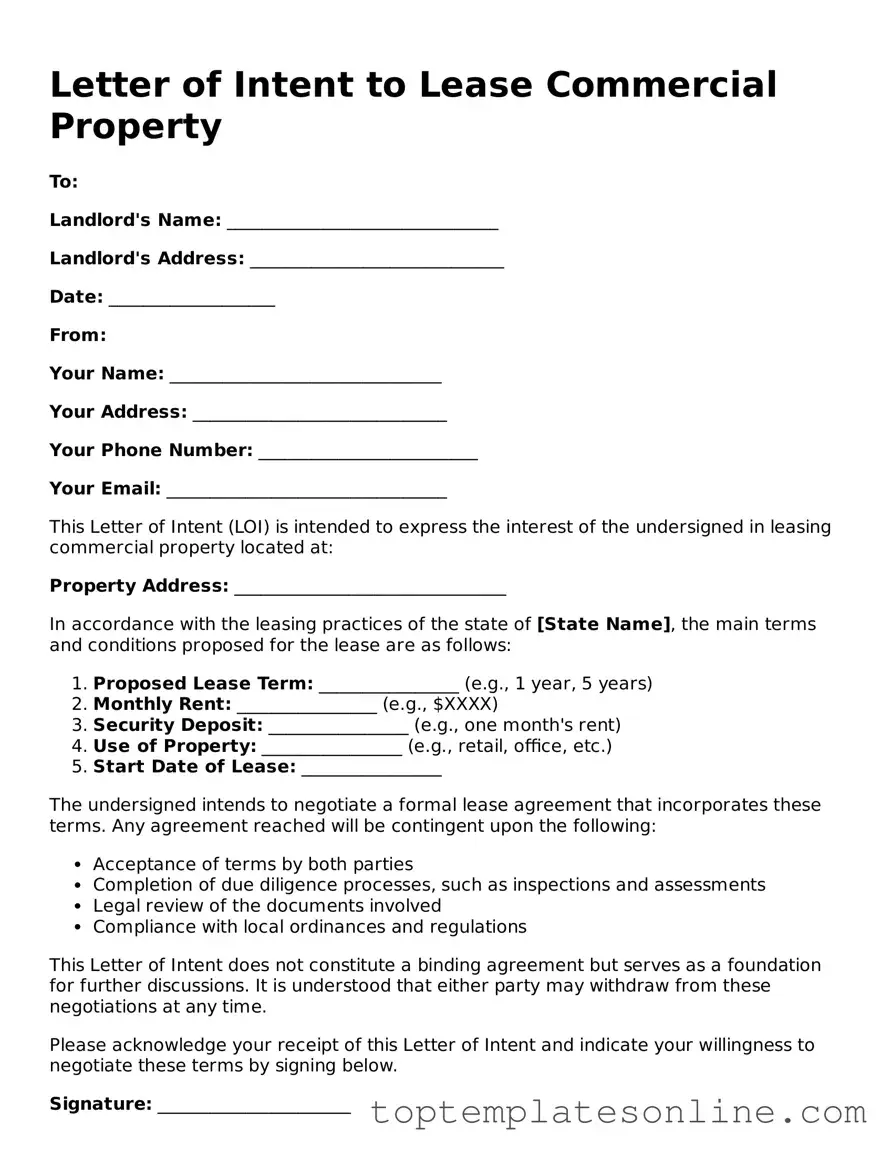Attorney-Approved Letter of Intent to Lease Commercial Property Form
A Letter of Intent to Lease Commercial Property is a document that outlines the preliminary terms and conditions of a lease agreement between a landlord and a prospective tenant. This form serves as a starting point for negotiations, helping both parties clarify their intentions before entering into a formal lease. Understanding its components can streamline the leasing process and prevent misunderstandings down the line.
Customize Letter of Intent to Lease Commercial Property Here
